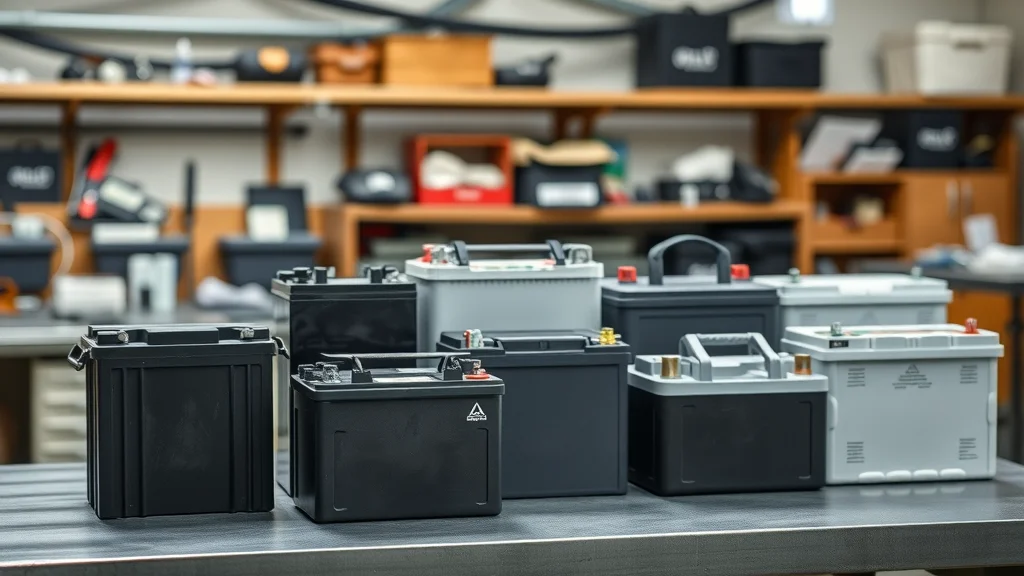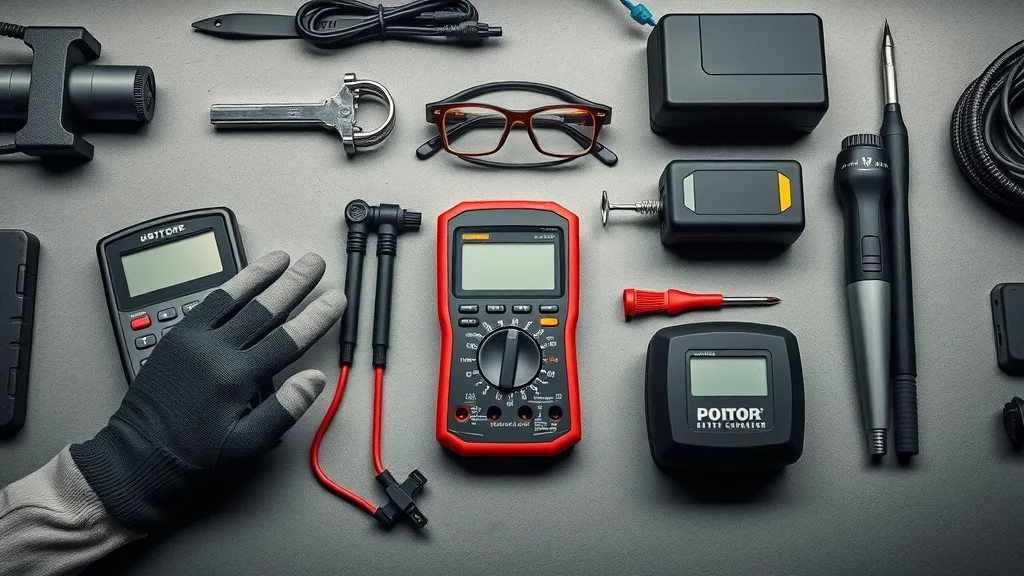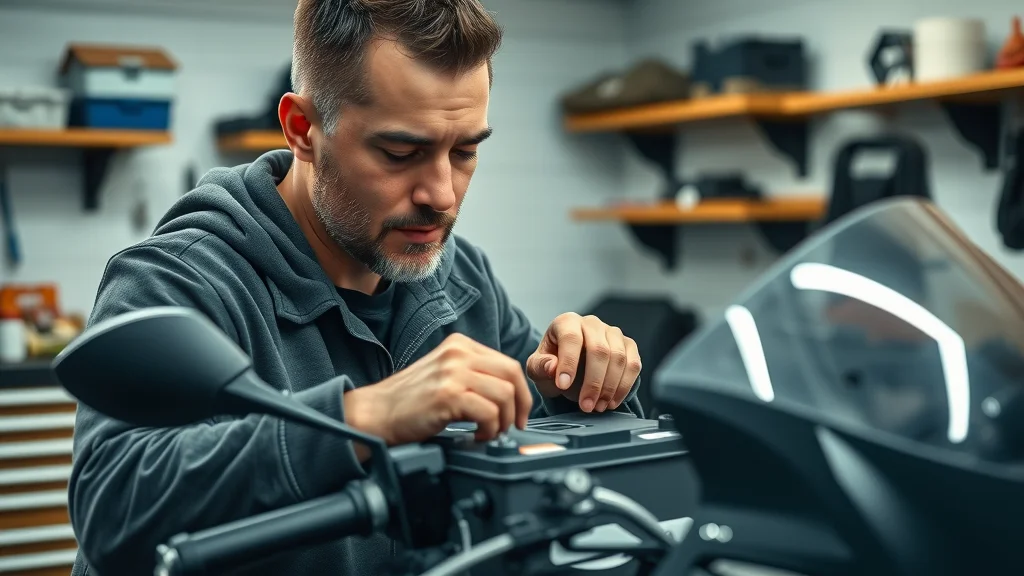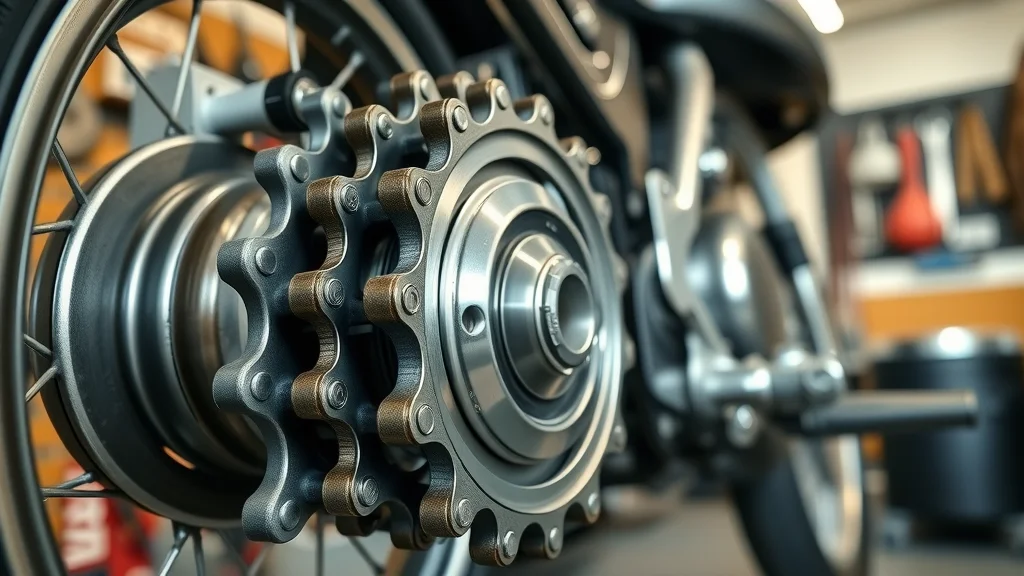Did you know that up to 50% of roadside motorcycle breakdowns are due to battery problems? It’s a statistic every rider dreads, yet too many ignore routine motorcycle battery testing and replacement until that fateful morning when their bike won’t start. This guide will equip you with practical knowledge to diagnose, test, and replace your motorcycle battery—so you never have to face those starting struggles alone.
Unveiling the Truth: Why Motorcycle Battery Testing and Replacement Matters
Your motorcycle battery is much more than just a box under the seat—it is the heart of your bike's starting and electrical system. Motorcycle battery testing and replacement ensures that every journey begins with confidence and ends without unexpected hiccups. Whether you ride daily or only on weekends, a healthy battery is crucial for powering your lights, starter motor, and sensors. Neglecting your battery can lead to slow cranking, dim headlights, electrical malfunctions, or total breakdowns far from home.
By routinely conducting a motorcycle battery check and replacing a deteriorating battery before it fails, you avoid emergency repairs and costly tow bills. Modern bikes increasingly rely on electronics—so a reliable battery isn’t just for convenience, it’s a key safety factor. This article reveals straightforward steps and expert advice to empower you as a bike owner. You’ll learn how to interpret warning signs, use tools for a precise voltage test, and decide when professional help is needed.

A Startling Statistic: The Leading Cause of Motorcycle Breakdowns
Motorcycle organizations and repair shops frequently report that battery failures are responsible for nearly half of all roadside assistance calls. Unlike automotive batteries, motorcycle batteries are smaller, struggle with vibration, and can suffer more from short trips and seasonal storage. The low capacity means even a minor drop in voltage or electrolyte level can prevent your engine from firing up. Understanding the causes and implementing regular battery checks can drastically reduce your risk of becoming part of this troubling statistic.
What’s more, factors like open circuit voltage, circuit voltage drop, and specific gravity affect your bike in ways you might not notice—until it refuses to start. With technology like fuel injection and anti-lock brakes drawing from your charging system, even modern motorcycles with AGM batteries or lithium-ion packs need attention. That’s why proactive motorcycle battery testing and replacement is one of the smartest moves you can make as a responsible rider.
What You’ll Learn About Motorcycle Battery Testing and Replacement
- Understand common battery issues and warning signs
- Learn how to perform a motorcycle battery check, including a voltage test
- Comparison of battery testing methods and services
- Expert tips on maximizing battery longevity
- Step-by-step battery replacement guide
Understanding Your Motorcycle Battery: Basics and Types
Before diving into motorcycle battery testing and replacement, it’s essential to understand the basics. Most motorcycles use compact batteries with different internal chemistries and construction styles. Choosing the right one—and knowing how each type behaves—ensures correct maintenance and effective testing methods.
The most common batteries today include traditional lead-acid batteries (both flooded and AGM), advanced lithium-ion options, and specialized gel cell batteries. Each type determines everything from charge retention to ideal voltage levels. This section will clarify these differences, so when you’re performing a motorcycle battery check, you’ll get accurate results and avoid costly mistakes.
Common Motorcycle Battery Types and Their Features

- Lead-acid batteries (conventional, AGM): Affordable and widely available. Conventional batteries use removable caps for maintenance and require checking electrolyte levels, usually filled with sulphuric acid. AGM batteries (Absorbed Glass Mat) are sealed, maintenance-free, and resist vibration better, making them popular for modern bikes.
- Lithium-ion batteries: Lightweight and deliver powerful cranking amps. These offer long life, fast charging, and minimal self-discharge but may require special chargers and are sensitive to extreme temperatures.
- Gel cell batteries: Use a gelled electrolyte, making them spill-proof and vibration-resistant. Often used in powersports for their durability, but require careful charging to avoid ruining the gel matrix.
- Key considerations: Ensure the new battery matches your bike’s specified cold cranking amps (CCA), voltage requirements, and physical size. Always check for compatibility with your charging system and whether you need special care for maintenance or replacement cycles.
Battery Specifications: What Riders Need to Know
Understanding the specifications of your motorcycle battery is crucial for effective maintenance and replacement. Key specs to monitor include amp-hour rating (Ah), cold cranking amps (CCA), and open circuit voltage. These indicators tell you much about how well your battery performs and how much “reserve” power is available to start the engine. Monitoring circuit voltage under load, and periodic voltage tests, provide valuable data about its health.
For conventional batteries and AGM batteries, pay close attention to electrolyte level and ensure there are no signs of leaks or low electrolyte. With newer lithium-ion models, it’s about ensuring a proper connection and using a compatible charger. Matching the recommended specs from your bike’s manufacturer helps prevent underperforming and bad battery replacements that fail prematurely.
Identifying Signs of a Failing Motorcycle Battery
Catching early warning signs can save you from a stranded ride. Watching for consistent symptoms means you can schedule a timely battery replacement instead of getting caught at the worst moment—like in the rain or at night. Not all signs are obvious, so use these cues to guide your next motorcycle battery check.
Warning Signs: When to Consider Motorcycle Battery Testing and Replacement
- Slow engine cranking
- Dim headlights
- Frequent need for jump-starts
- Electrical issues linked to the motorcycle battery
If your bike turns over slower than usual, headlights appear dimmer, or you find yourself using a charger or jump starter more often, it’s probably time for a voltage test. Modern bikes with EFI or LCD dashboards may show error messages or quirks attributed directly to low voltage or a bad battery. Recognizing and responding to these signs ensures your next ride isn’t ruined by a dead battery. Always note if there is corrosion on your battery cable connections or visible leaks—both can accelerate failure.
While understanding battery warning signs is essential, it's equally important to know how seasonal changes can impact your motorcycle's electrical system. For a deeper dive into how temperature shifts and storage habits affect battery health, check out these essential seasonal bike care strategies that every rider should consider.
Step-by-Step Motorcycle Battery Check: How to Test and Diagnose
Proactive maintenance begins with the right tools and know-how. A proper motorcycle battery check goes beyond a visual once-over. Testing voltage, inspecting for corrosion, and understanding results can help you decide between recharging, replacing, or seeking a pro’s help. Below, you’ll learn both DIY and professional-level diagnostic techniques.
Essential Tools for a Proper Motorcycle Battery Check
- Voltmeter/Multimeter for voltage test
- Protective gloves and safety glasses
- Battery charger (optional)

Your toolkit doesn’t have to be fancy. A quality digital volt meter lets you check open circuit voltage and perform a basic voltage test. Always protect yourself with gloves when working near batteries—especially conventional types containing sulphuric acid. A modest battery charger can recover a low battery, but if repeated charges are needed, that’s a glaring warning to replace it. By using these tools regularly, you’ll spot issues before they escalate.
Performing a Voltage Test on Your Motorcycle Battery
- How to access your motorcycle battery
- Using a voltmeter for accurate readings
- Interpreting voltage test results
To check your battery, safely remove the seat or panel covering the battery compartment. Attach your voltmeter’s red probe to the positive terminal and black to the negative. With the key off and motorcycle not running, you’re reading the open circuit voltage—a snapshot of stored charge. A healthy, fully charged conventional or AGM battery should register around 12.6–12.8 volts; lithium-ion may read up to 13.2V. If the reading drops below 12.4V, your battery may be unreliable.
After an open circuit voltage test, start your engine and re-measure: Are the volts holding steady or dropping? If there’s a sudden voltage drop below 10V during cranking, your battery may not hold a charge under load. Consistent low-voltage readings signal the need for a recharge or full battery replacement. Always double-check readings after removing a surface charge (turn on the headlight for a minute, then retest).
Other Diagnostic Methods for Motorcycle Battery Testing and Replacement
- Load testing explained
- Visual inspection for corrosion
- Understanding battery age and service lifespans

An advanced battery check involves a load test: using a load tester to simulate starting the engine. This measures your battery’s ability to maintain voltage under strain. Most shops or auto parts stores offer this service and can spot a bad battery quickly. Additionally, look for white or green corrosion at the terminals, which could indicate electrolyte leaks or contact issues.
Battery age is a vital clue. Conventional batteries typically last 2–3 years, while AGM batteries or lithium-ion types can exceed five with care. If you’ve noticed low electrolyte levels, frequent top-ups, or visible cracks, plan for replacement. Always check for a valid date code or expiration sticker. Remember, batteries with low electrolyte levels, that can’t maintain a charge, are a breakdown waiting to happen.
Comparing Automotive Chains: Do They Test Motorcycle Batteries?
Major auto parts retailers offer free or low-cost motorcycle battery testing and replacement services. But not all are equal—knowing where to go can save time and money. Let’s look at how AutoZone, O’Reilly, and local shops compare for your next battery check.
Does AutoZone Test Motorcycle Batteries?
Yes, AutoZone offers in-store motorcycle battery testing using dedicated testers that work on all standard battery types—including AGM batteries and traditional lead-acid. Their process includes a quick open circuit voltage test and, when needed, a basic load test. AutoZone staff can recommend a replacement if your battery fails and may handle installation on select models. With locations nationwide, it’s a convenient stop for DIYers and first-time owners.
Does O’Reilly Test Motorcycle Batteries?
O’Reilly Auto Parts also provides complimentary motorcycle battery checks—including voltage test and visual inspection for corrosion, leaks, and general condition. They can quickly discern whether your battery is fully charged or developing faults due to low electrolyte or internal failure. While battery replacement services may vary by location, most stores offer a rewards program that can make professional replacement economical for repeat customers.
How to Test if a Motorcycle Battery is Good: DIY Guide

Curious if your battery is up for another season? A DIY voltage test is a simple, effective check. First, ensure your bike is off and the battery has rested for at least an hour after charging (surface charge can skew results). Use your voltmeter to measure the open circuit voltage; a fully charged 12V battery usually reads between 12.6–12.8V.
If your reading is between 12.4V and 12.6V, charge the battery, then retest. Below this, or if your bike’s lights dim or engine struggles to crank, your battery may be on its last legs. Advanced home mechanics may perform a load test using a headlight or starter while monitoring the voltage to watch for significant drops. Consistent low readings likely mean it’s time for a replacement, especially after ruling out issues with your charging system or battery cable integrity.
How Do I Know If My Motorcycle Battery Needs Replacing?
The clearest clues your battery is failing include frequent jump-starts, extended engine cranking, and persistent dimming of lights—even after a full charge. If, after a proper voltage test and recharging, your battery still can’t hold a charge or voltage falls rapidly after shutting off the engine, replacement is unavoidable.
Other indicators include visible case swelling, cracks, or leaks, white powder or residue near terminals, and batteries more than three years old—especially if used in extreme weather or left dormant. These are classic signs your battery is at the end of its service life and should be swapped for reliability and safety.
Motorcycle Battery Replacement: Steps and Safety Precautions
Swapping out a bad battery is straightforward, but safety always comes first. Battery acid (sulphuric acid) is hazardous, terminal connections are often tight, and improper installation can damage sensitive electronics. Here’s how to do it the right way.
Essential Steps for Safe Motorcycle Battery Replacement
- Preparation and disconnecting old battery: Turn off the ignition, remove your seat or cover, note the cable layout, and disconnect the negative cable first (to reduce short-circuit risks). Remove the positive second, then lift out the battery with gloved hands.
- Installing new motorcycle battery: Ensure terminals are clean—remove corrosion with a mix of water and baking soda if needed. Place the new or charged battery into its compartment, connecting the positive cable first and negative second. Double-check for tight, corrosion-free contact.
- Final battery check and voltage test: Use your voltmeter for one last open circuit voltage test. Confirm the battery is fully charged before starting the engine. Secure the battery so it won’t move or vibrate during rides.

Extending Battery Life: Maintenance Tips and Best Practices
To avoid frequent motorcycle battery testing and replacement, develop preventative habits. Proactive care—like a regular battery check and maintaining proper charge—helps your battery live longer and start stronger.
Key Habits to Prevent Frequent Motorcycle Battery Testing and Replacement
- Set a monthly voltage test schedule to catch early issues before they result in inconvenience.
- Store your bike in a cool, dry place with a trickle charger or battery tender hooked up whenever inactive for long periods. Extreme temperatures drastically shorten battery life.
- Keep terminals clean and corrosion-free; bad contacts or residue drain your system’s power and can mimic a bad battery.
- Don’t let the battery sit fully discharged for weeks—this accelerates chemical breakdown inside conventional batteries (low electrolyte, loss of surface charge).
Expert Quotes and Insights on Motorcycle Battery Check and Care
"Consistent motorcycle battery check-ups can save riders the trouble of unexpected breakdowns and costly roadside assistance calls." — Battery Specialist
Comparative Table: Motorcycle Battery Testing and Replacement Services
| Provider | Free Testing? | Handles Replacements? | Lead Time | Extra Perks |
|---|---|---|---|---|
| AutoZone | Yes | Sometimes | Same Day | Multiple locations |
| O’Reilly | Yes | Sometimes | Same Day | Rewards Program |
| Independent Shops | Varies | Yes | Varies | Personalized Service |
Watch: Step-by-step demonstration of using a voltmeter to check a motorcycle battery's voltage, with close-up shots of the process and safety tips included. Clean, well-lit garage environment, clear visuals, and natural pacing.
Watch: Short, actionable video showing how to remove your old motorcycle battery safely and install a new one using basic hand tools. Includes pro tips on avoiding electrical shorts and double-checking connections.
Lists: Motorcycle Battery Maintenance Checklist
- Visual inspection for leaks/corrosion
- Check terminal connections
- Monthly voltage test
- Ensure battery expiration date hasn't passed
- Schedule seasonal motorcycle battery check and replacement as needed
FAQs: Motorcycle Battery Testing and Replacement
-
How often should I perform a motorcycle battery check?
At minimum, check your battery once a month and before every long ride. Before seasonal storage and after long inactivity, always test voltage and inspect for corrosion or leaks. -
What is the ideal voltage for a healthy motorcycle battery?
A fully charged 12V battery measures 12.6–12.8 volts for lead-acid and AGM types; lithium-ion can be slightly higher, up to 13.2V. Readings below 12.4V signal possible trouble. -
Can I replace a motorcycle battery myself without voiding the warranty?
Yes, as long as you use a battery that matches manufacturer specifications and follow the proper installation steps, DIY replacement does not void most warranties. Always keep your purchase receipt. -
Where should I recycle my old motorcycle battery?
Bring spent batteries to auto parts stores like AutoZone or O’Reilly, which offer free recycling. Many local recycling centers or hazardous waste collection sites also accept them, as batteries contain hazardous materials.
Key Takeaways for Effective Motorcycle Battery Testing and Replacement
- Motorcycle battery testing and replacement prevent unexpected issues
- DIY voltage test empowers motorcycle owners
- Timely battery check improves safety and reliability
Putting It All Together: Ensuring Your Motorcycle Battery Lasts
Staying proactive with motorcycle battery testing and replacement is the key to safer, more reliable rides. Remember, a quick check today saves a tow tomorrow.
If you’re ready to take your motorcycle maintenance to the next level, don’t stop at battery care. Discover how a holistic approach to seasonal upkeep can protect every part of your bike, from the engine to the tires. Explore seasonal bike care secrets every rider must know for expert tips that go beyond the basics. By integrating these advanced strategies, you’ll ensure your motorcycle performs at its best—no matter the weather or riding conditions. Make every ride smoother and more dependable by staying ahead with comprehensive, year-round maintenance.
 Add Row
Add Row  Add
Add 



Write A Comment